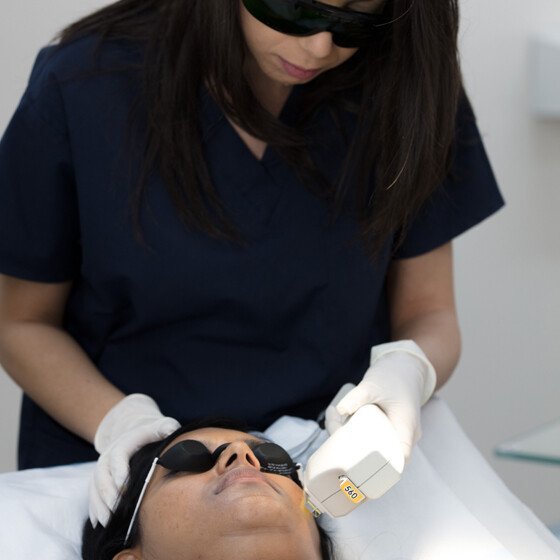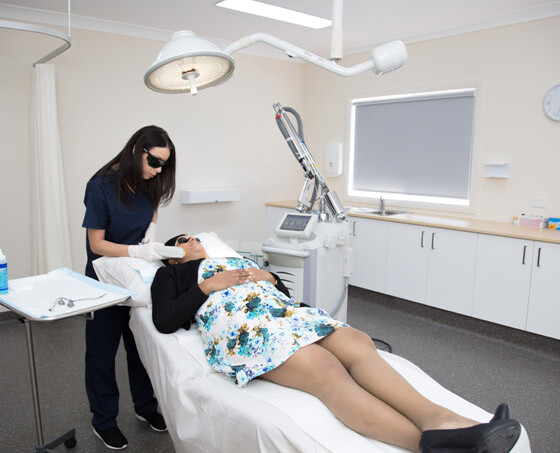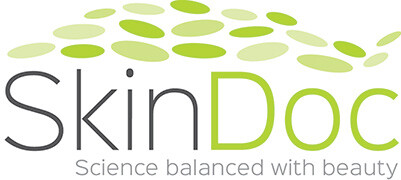Fractionated Laser can be used to treat:
- Acne scars
- Other types of scarring
- Wrinkles
- Sun damage and ageing skin changes
- Stretch marks
Laser is an acronym for light amplification by the stimulated emission of radiation. Laser light is monochromatic that is the output is composed of a single wavelength of light. This means the light is coherent and all waves of light travel in phase spatially and temporally. Laser light is collimated that is it does not diverge when travelling long distances.
Fractionated laser light can vaporise a thin column of tissue. Fractional non-selective photothermolysis occurs when a small columns of tissue undergo thermal damage and this area is then repopulated by activated skin cells which are involved in tissue remodelling without scarring.
Light is absorbed into the skin by molecules called chromophores. Ablative lasers vaporise tissue by rapidly boiling water inside the tissue. Non-ablative lasers do not vaporise tissue. In dermatology, non-ablative lasers are at wavelengths absorbed by water, others are absorbed by other chromophores such as haemoglobin, melanin, lipids and tattoo inks.


Selective photothermolysis
Thermal relaxation time TRT is the time it takes for substantial cooling of the target tissue. TRT is strongly correlated to the size of the target tissue. TRT determines the ideal pulse duration for selective photothermolysis, in seconds and is directly proportional to the square of the target tissue size in millimetres.
The wavelength of light must match the absorption spectra of the chromophore. The pulse duration mist be shorter than the thermal relaxation time (the time required for the target to lose 50% of heat) of the target. Heating of the target tissue leads to denaturation of proteins and nucleic acids and eventually cell necrosis or cell death. The target’s TRT is directly proportional to diameter of the target. Larger targets such as hair follicles have longer TRT than smaller targets such as tattoo particles and require longer pulse durations.
Fluence is the energy delivered per unit of skin and is defined in J/cm2. In optimal selective photothermolysis the fluence is inversely related to absorption by the target structure. For example stronger fluence requires less absorption. Stronger absorption requires less fluence.
Fractional Photothermolysis
Microbeams of laser light is used to target tissue leading to microthermal zones MTZ of thermal injury. These zones are 100-300um in size. The advantages of this technique is that it spares the intervening tissue and allow faster healing and reduces the risk of side effects.
